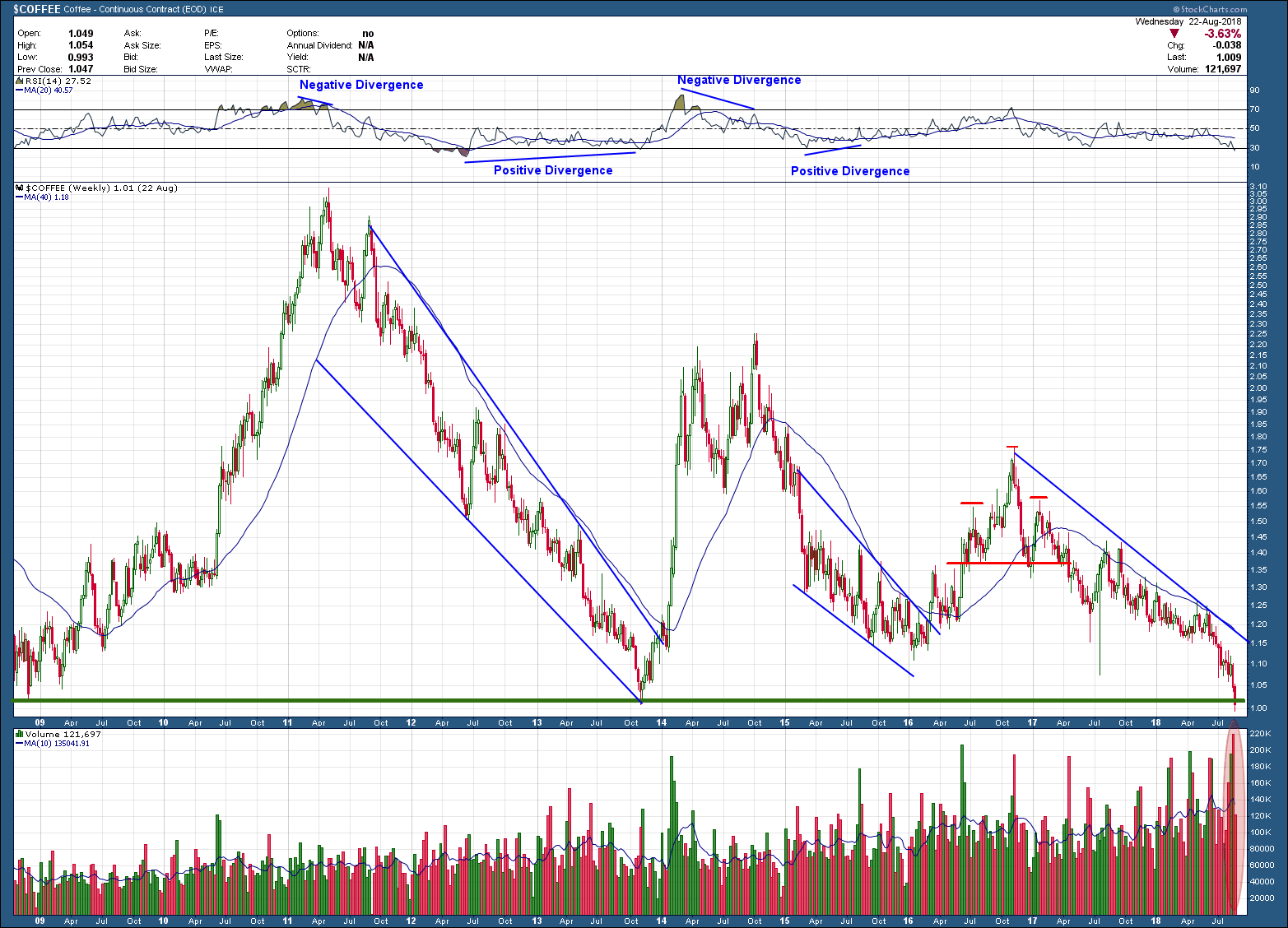Those long-term readers know by now I watch the semiconductor index closely as it tends to be the canary in the coal mine when it comes to establishing an early trend for the US stock market. It goes without saying that “establishing early trends” goes in both directions.
Taking a look at SMH, the semiconductor ETF, the 6-year chart reveals some interesting things.
1) It does a great job of showing market structure. Markets trend, then consolidate. Wash rinse repeat. While it has not yet happened, consolidations are areas where the trend can end and reverse course. Note to self - best I memorize for later.
2) In 2015, SMH made a new, all-time high (1) and then went on to break below both its long-term uptrend and 200 day moving average. RSI momentum confirmed the weakness as it formed negative divergence. That break down was the start of a consolidation lasting 14 months and eventually went on to make two more lower highs (2,3). As was indicated by the consolidations declining volume, it eventually went on to gap up and break out into a new uptrend.
3) In March of this year, SMH made a new, all-time high (1) and then went on to break both its long-term uptrend and 200 day moving average. The last time this occurred was in 2015. That break so far has gone on to make two more lower highs (2,3). RSI momentum divergence warned of an eventual consolidation.
What is different in the current consolidation that has not yet ended, instead of breaking into a new trend higher, SMH currently sits on critical support and the volume during this consolidation has increased which is a big warning sign of (smart to dumb money) distribution.
You know the drill by now. If SMH stays and holds above the current levels, we can, as a minimum, expect a retest of prior highs (1,2 or 3). At best, it goes on to eventually begin a new uptrend. On the flip side, a break and hold below, lower prices are in our future. The current rounded top pattern, if it plays projects to a price that would fill the gap made back in April of last year, ~20% lower. These differences point to a higher probability the eventual direction out of this consolidation will be lower. If so, this would be the first time in a very long period of time where the risk of being in stocks outweighs their potential reward.
Either way the semi’s go, expect the broader market to follow suit and post haste.






